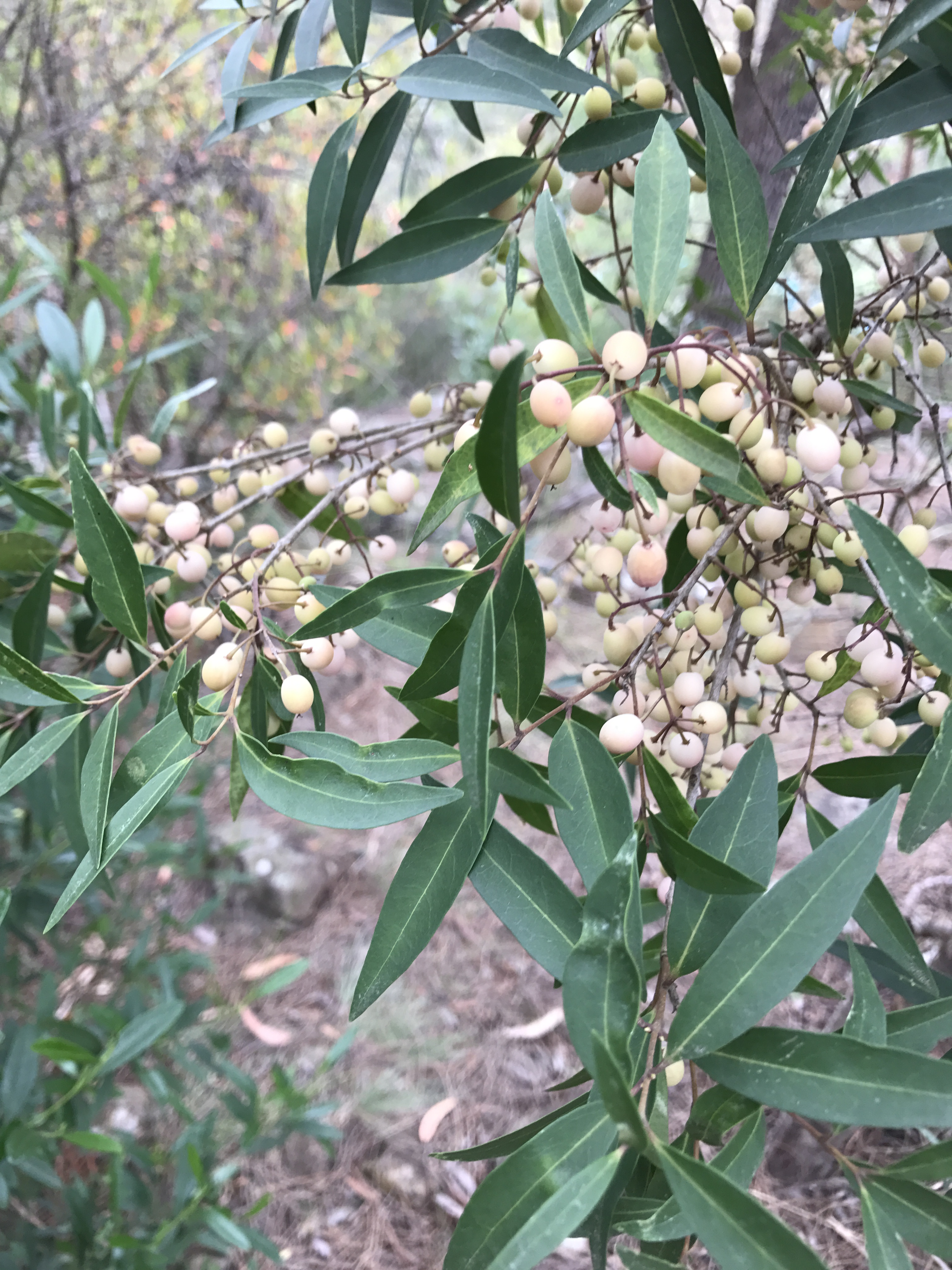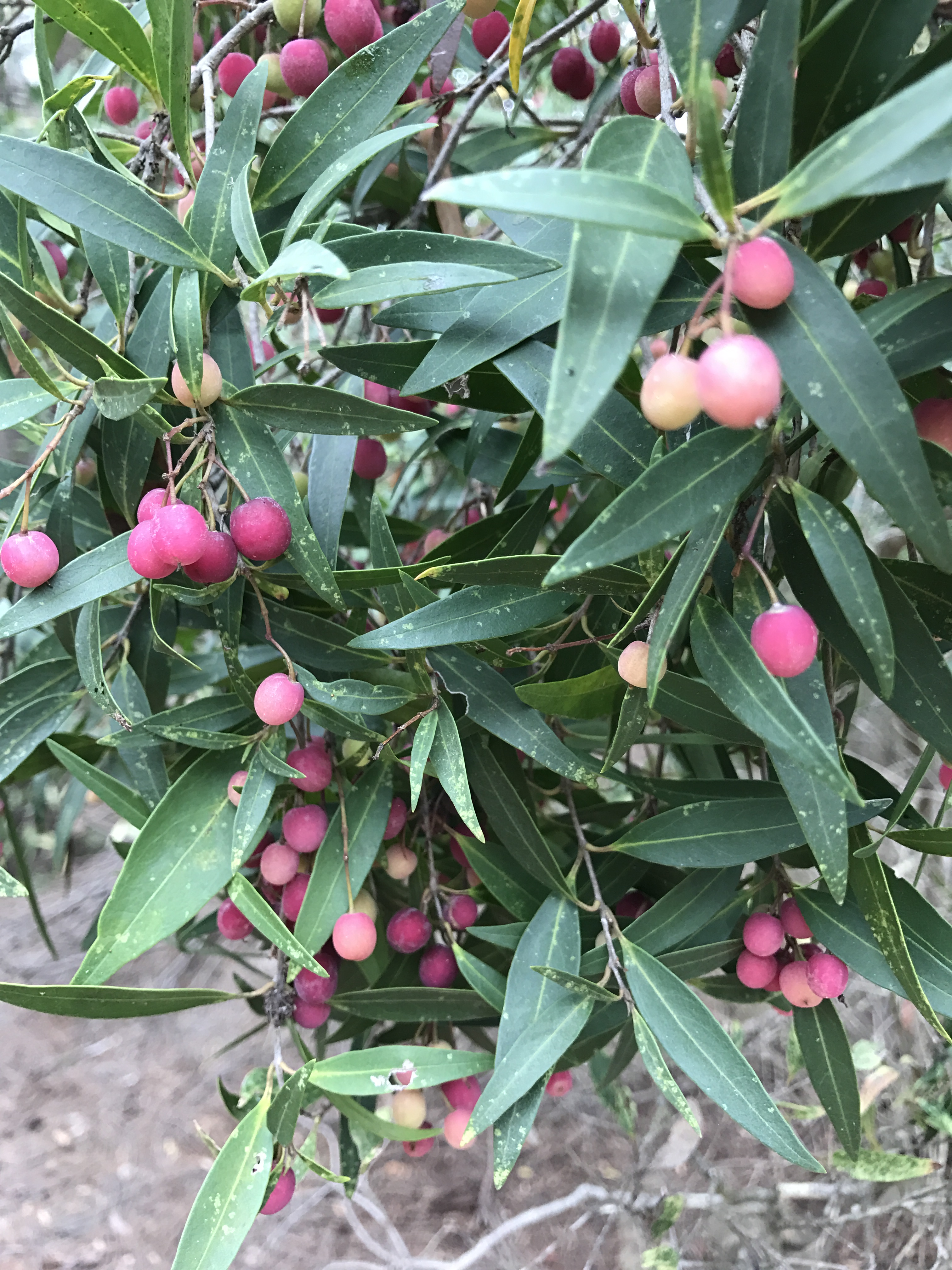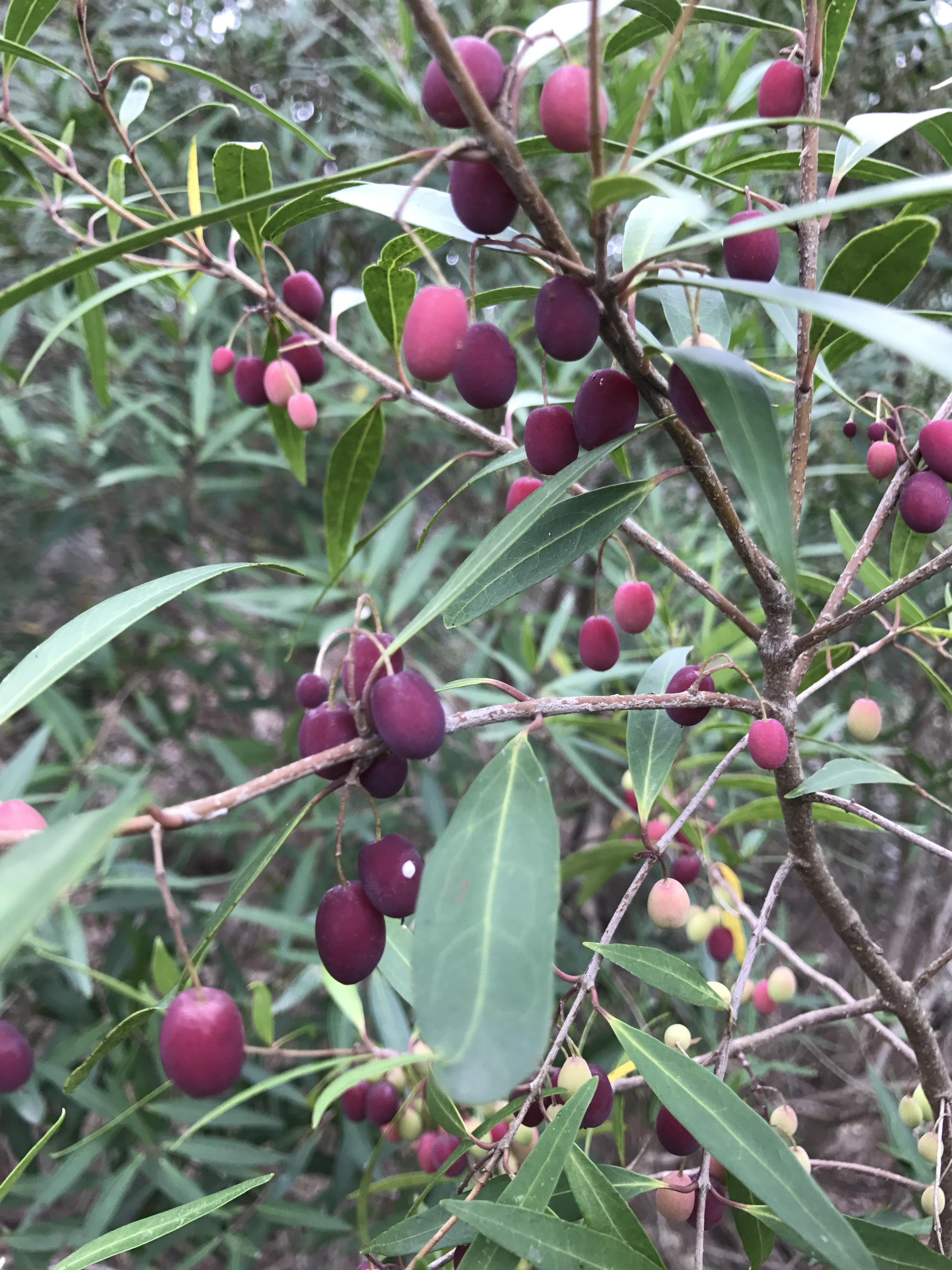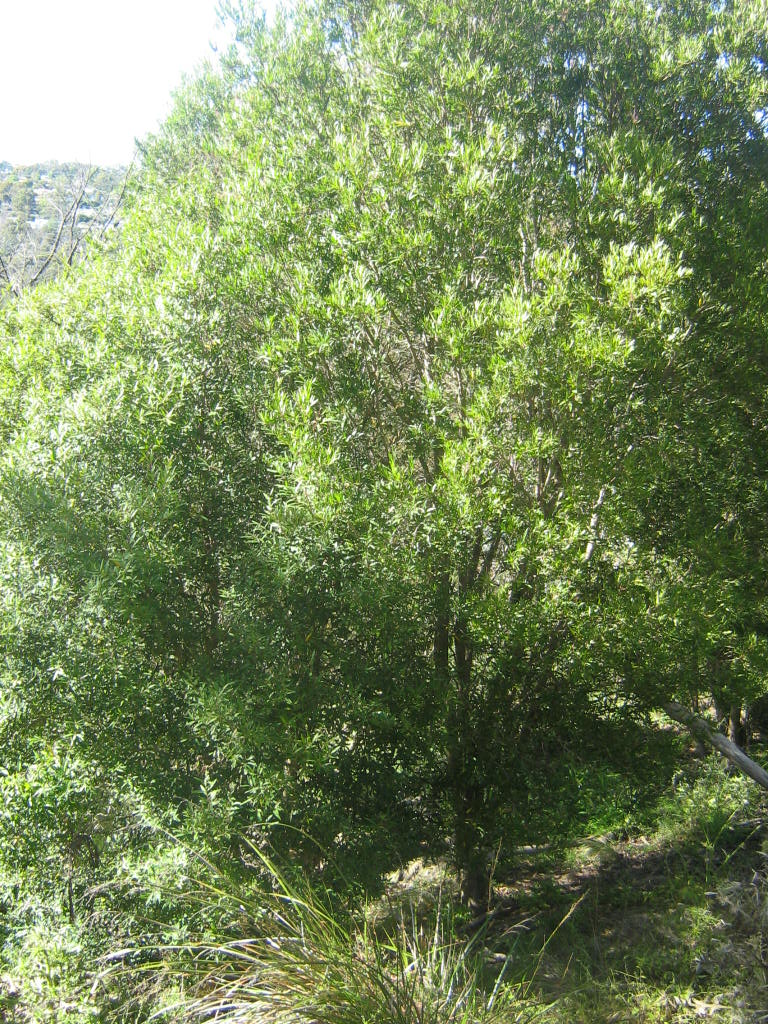Scientific Name: Notelaea ligustrina
Common Name: native olive
Family Classification (Clade): Eudicots
Family: Oleaceae
Form Description: Tall shrub or sturdy tree.
Height (m): 3 – 10
Flowers: Tiny white or green 4-petalled flowers in much-branched clusters in axils.
Fruit: Drupe – olive-shaped, 1cm x 8mm, green at first, becoming yellow or pink and then dark purple. Not often seen.
Municipality
Plant Communities
Habitat Notes
Widespread along river banks and on moist shady hillsides. Also found in rocky gullies.
Site Tolerance
Moist, Rocky, Shady
Soil Tolerance
Fertile, Loam, Well-drained
General Notes
An adaptable, slow-growing plant. Bird attracting.
Propagation Calendar
-
Flowering Month
Jan Feb Mar Apr May Jun Jul Aug Sep Oct Nov Dec -
Seed Collecting Month
Jan Feb Mar Apr May Jun Jul Aug Sep Oct Nov Dec -
Sowing Month
Jan Feb Mar Apr May Jun Jul Aug Sep Oct Nov Dec -
Cutting Month
Jan Feb Mar Apr May Jun Jul Aug Sep Oct Nov Dec
Propagation Method
Seed Information
Seed Collection
Flowers early spring, sometimes autumn and sometimes at other times – this could affect seed collection times.
Seed Treatment Method
Standard Scatter seed thinly on to damp potting mix. Hold seed in place by covering with more potting mix to approximately the depth of the seed size.
Seed Treatment Notes
Remove flesh from the very large seed before sowing.
Cutting & Division Information
Can be propagated from cuttings.



